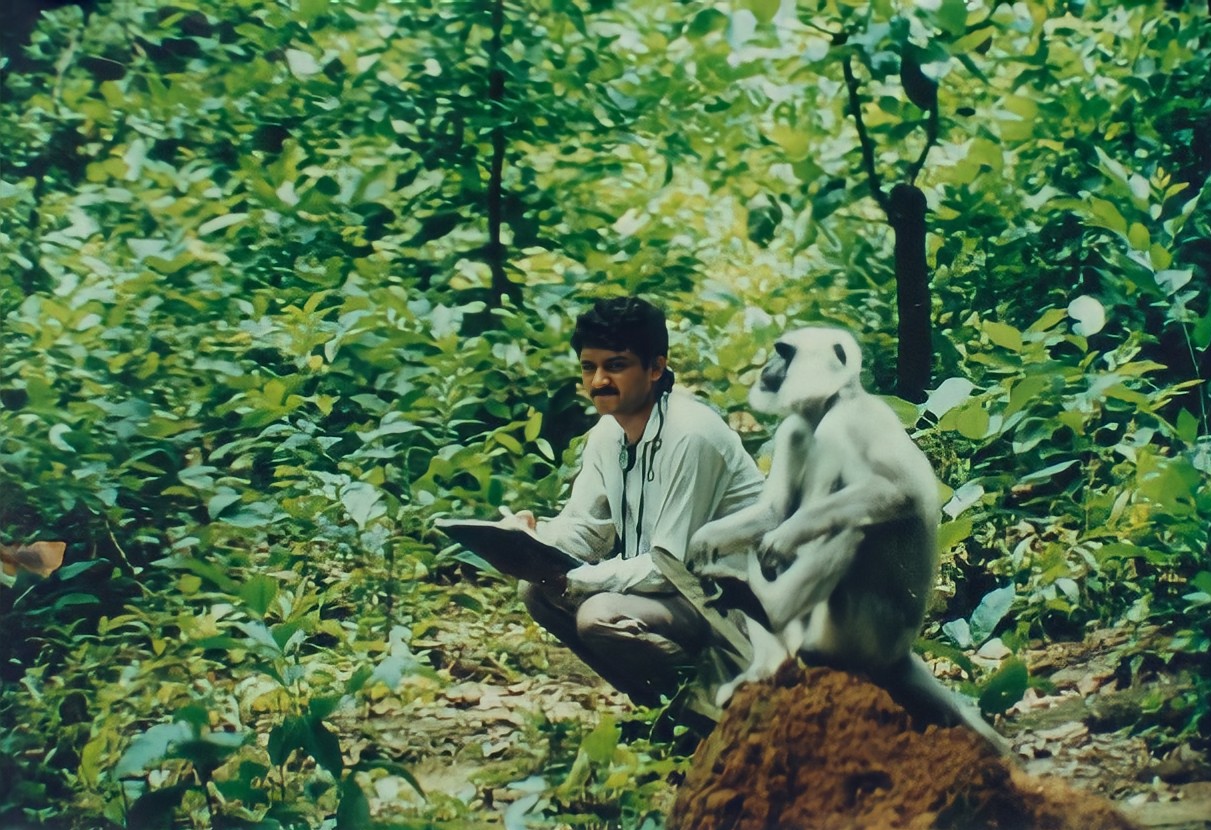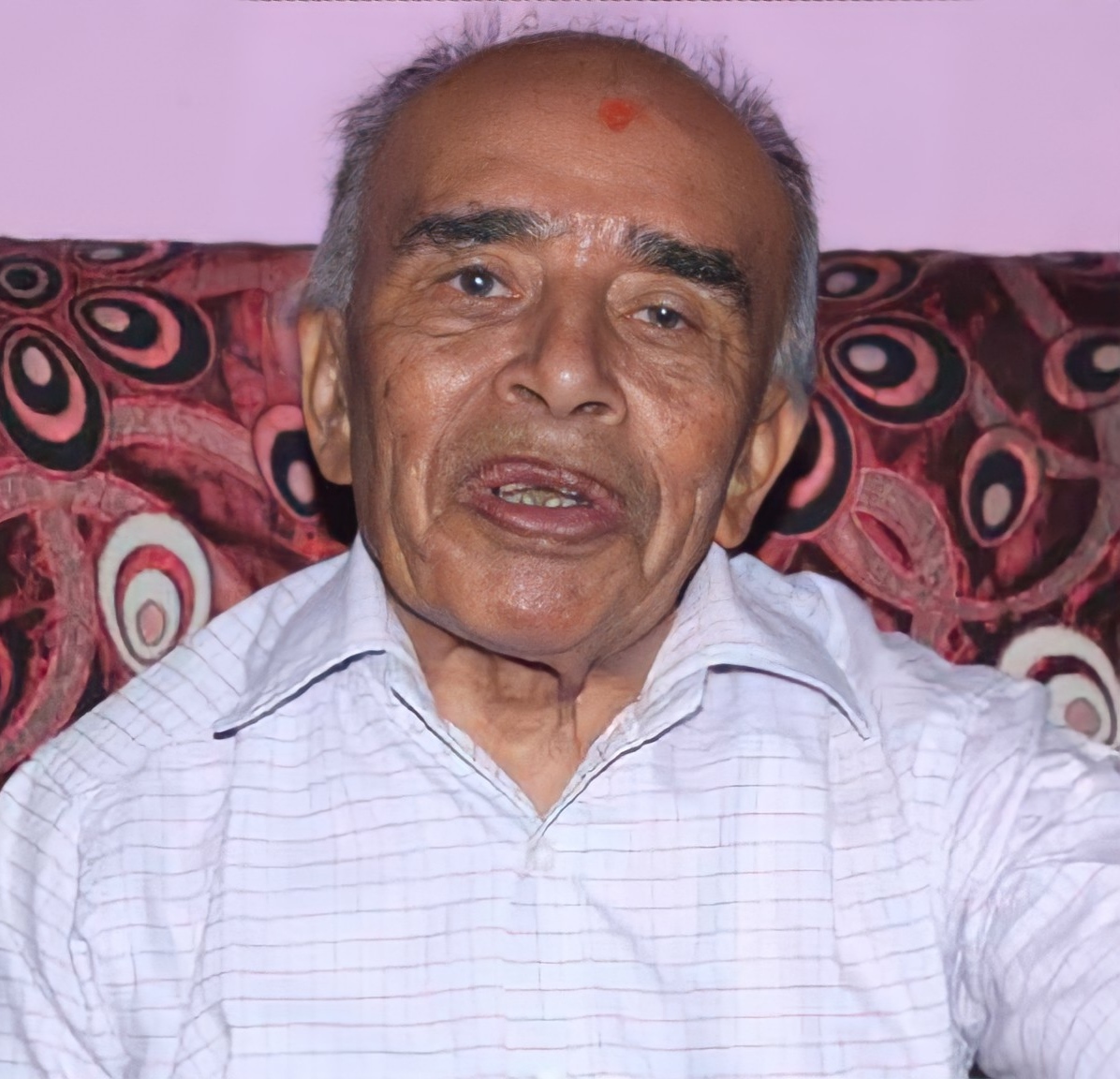Quick facts
Born on 9 June 1956 in Lalitpur
Went to Nepal Adarsha Secondary School, Kathmandu
Graduate and postgraduate from Tri Chandra College, Kathmandu
PhD from Tribhuvan University, Kathmandu and post-doc from University of Washington, USA
Became the first Nepali to complete a PhD in animal behavior, specializing in Hanuman langur
Husband of Janak Kumari Chalise
Father to Lushun Chalise and Pavel Chalise

My grandfather was among the first Brahmins to become an army captain. The Ranas didn’t allow Brahmins in security forces, but my grandfather still went on to serve as the security chief of the then Rana prime minister Juddha Shumsher (1875-1952). My father was the first SLC graduate from my family. He was a technical bureaucrat (agricultural extension officer) from the southern belt of Lalitpur, a rural part of Kathmandu valley.
Growing up in a family of these great men, I had big shoes to fill. But I was determined to honor their legacy.
I was good at school and wanted to be a medical doctor. In 1975, I applied for a scholarship in the Ministry of Education. I was selected for a Japanese scholarship but as I could not be informed of it on time, an alternative candidate got it. It was a heartbreaking moment. I felt like a common Nepali citizen could not even dream big. This is also why I decided to get involved in student politics; I was determined to change things.
I was a BSc student at Tri Chandra Campus, but as my interest was in politics I eventually dropped out. For the next seven years, I struggled in politics.
I then realized I must continue my studies and returned to college to get my bachelor’s degree. I submitted my thesis on butterfly species of Kathmandu valley. My research and findings were unique at the time.
For my master’s degree, I studied red pandas in Langtang and did some research on fish species of the Trishuli River. This experience increased my interest in working in Nepal’s remote mountains. At the time, many students used to submit their thesis with brief research on animals or birds in their surroundings. I, on the other hand, visited the lesser-known Arun valley for my biodiversity study. There was no national park in Arun valley then. I collected data on various animals, birds, and their habitats, thinking that my research would someday help in the establishment of a national park in the region. This dream of mine came true in 1992 with the establishment of the Makalu Barun National Park.
I was always interested in primates, the precursors to human beings. So I decided to study monkeys for my master’s. People made fun of me at the time, as everyone else was studying rhinos, tigers, elephants, etc. Monkeys were considered useless. But I wasn’t discouraged. In terms of academic certificate, I did my PhD from Tribhuvan University, where I submitted my research thesis, but all my study, I did at the George August University in Göttingen, Germany. My field research expenses as well as lab analysis costs were all paid for by the same university. I completed my PhD in 1995, thus becoming Nepal’s first primatologist and expert on animal behavior.
 Mukesh Kumar Chalise collecting data on Habituated langur in 1993.
Mukesh Kumar Chalise collecting data on Habituated langur in 1993.
You normally get a PhD after 800 hours of fieldwork, but I had worked for 1,800 hours. My American and German professors used to tell me that I was a crazy scientist. My research was also significant because only female monkeys had been studied until that time. I, however, decided to study both male and female monkeys simultaneously. I studied their ecology, hierarchy, foods, behaviors, and specifically sex differences in feeding behavior.
I also studied the behavior of red panda, wild water buffalo, spotted deer, musk deer, blackbuck, snow leopard, Himalayan Tahr, pika and other animals. I have spent numerous sleepless nights in forests studying animal behavior. I have always believed in field-based knowledge and bold, brave and basic initiation in research with outreach programs for surrounding inhabitants. Such programs aimed at youngsters boost environment conservation and help locals generate income.
Tinjure-Milke-Jaljale Rhododendron Conservation Area is an initiation of the International Union for Conservation of Nature (IUCN). I studied the possibility of that area as a biodiversity researcher and discovered a habitat for the red panda. In another IUCN project, I was in Ghodaghodi Lake where, for the first time, I found gavial crocodiles in lakes. Before that, it was believed they could be found only in rivers. Similarly, I was the first to spot Binturong in Nepal, noticing its skin in the Fulbari area, Kailali, and I gave it a Nepali name, Bhalu biralo. I also had the opportunity of recording the behavior of the often shy and elusive red panda for over two hours in Choyatar, Ilam.
In Langtang, I worked for almost 13 years, starting in 2001. Every year, I used to take my students there to train them. It was during one of these study tours that I spotted a snow leopard in Langtang for the first time. I also observed differences in pika morphology between the populations of Langtang and Api Himalaya.
I have conducted the census of river dolphins and recorded 63 in Mohana river system alone and counted the musk deer population in Sagarmatha National Park. Every time, I used to find new things in my research and it was a joyful experience.
I enjoy my research. I have visited almost every forest area and larger river system in Nepal to study its biodiversity.
I have given Nepali names to so many animals like Haddi Bagh for Hyena, Gorkhali Musa for Apodemus Gurkha, Silu Biralo for Spotted Linsang, etc. I renamed the Aasami monkey as Pahare Bandar. Recently, I found via genetic analysis that Pahare Bandar is a unique resident of Nepal and is a different species from the Indian or Thai Aasami monkeys.
I also discovered that animals like wild water buffalo, rhesus monkeys, and blackbuck have a male band. I noticed such a social system even in other wild animals and named it Jogi Samuha of that species. It was unique information for zoologists around the world, as everyone used to think male wild animals always lived with females in social groups.
About him
Janak Kumari Chalise (Spouse)

He has a passion for studying. After dropping out of BSc, he jumped into politics but soon realized that education and research are what he is meant to do. Besides being a prominent zoologist, he is also a great father. Despite his busy schedule, he has always made it a point to spend time with his family.
Suvas Chandra Ghimire (Student)

I am in the last phase of my PhD and Mukesh sir is my mentor, guiding me in my research for the past 25 years. Despite being a pioneering primatologist of Nepal and internationally acclaimed scientist, he is a down-to-earth person. He has helped countless students and animal-centered organizations.
Bhairab Risal (Friend)

Mukesh is like a family member. He is an all-rounder. I have seen him do full-time politics, business, academia, etc. I also consider him my mentor. In Radio Sagarmatha, I had to conduct a program on monkeys, as there was a national issue of monkeys destroying farmlands. I had no idea about the topic. It was Mukesh who briefed me on everything I needed to know. This gave me confidence and helped me become a successful RJ.
A shorter version of this profile was published in the print edition of The Annapurna Express on June 2.












